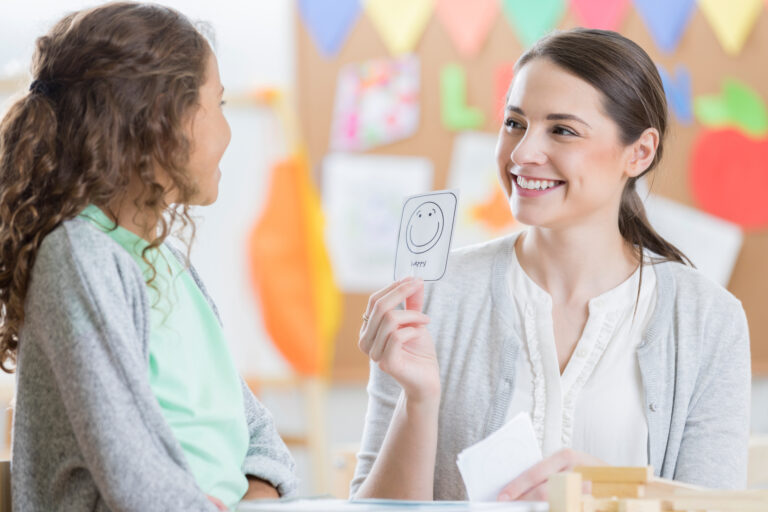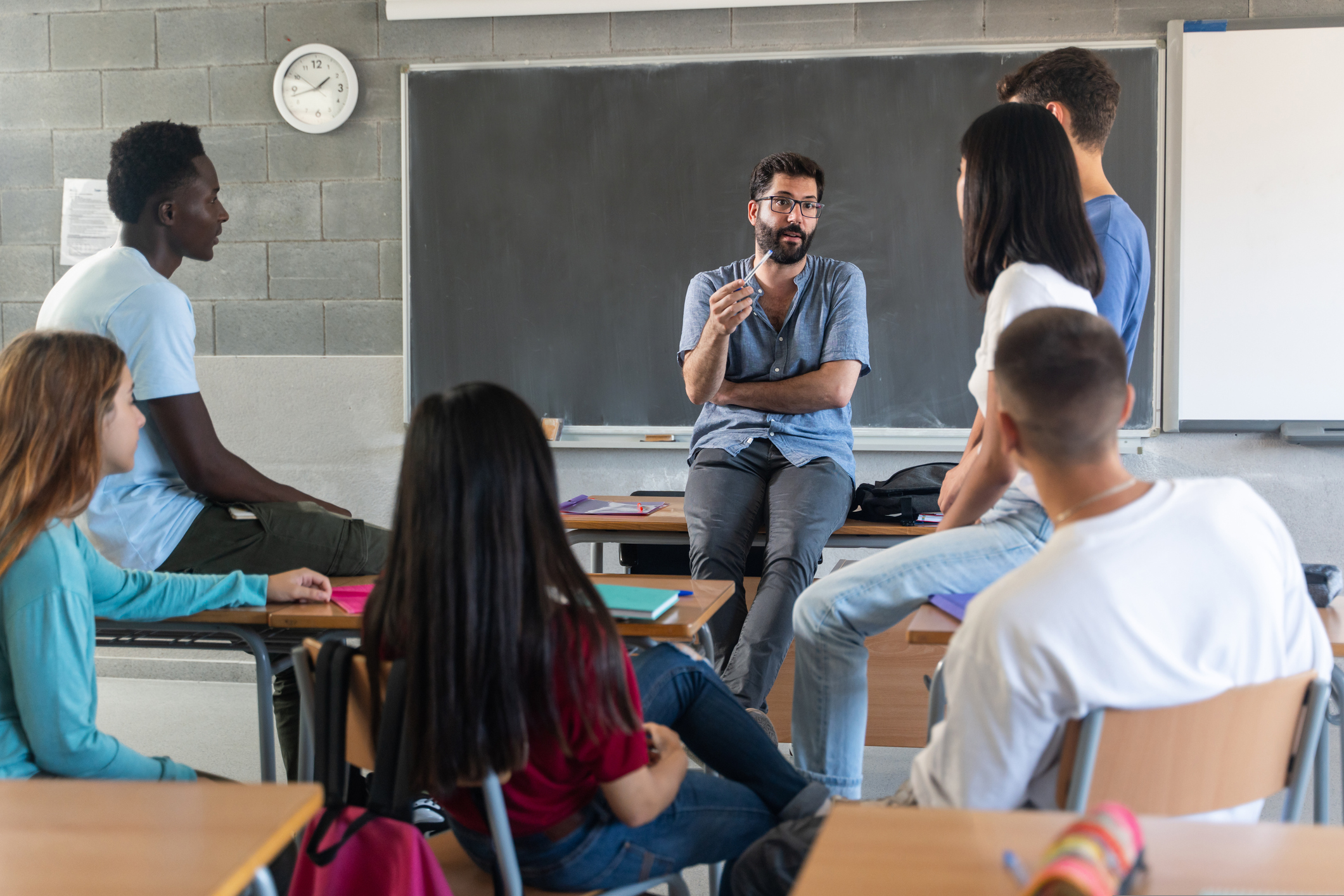In today’s classrooms, educators are faced with the challenge of addressing a wide range of student behaviours. While traditional disciplinary approaches may have been effective in the past, research has shown that a trauma-informed lens can greatly improve outcomes for both students and teachers.
Understanding the impact of trauma on student behaviour is crucial in creating a positive and supportive classroom culture. Many students come to school carrying the weight of adverse childhood experiences, which can manifest in various ways, such as aggression, withdrawal, or difficulty regulating emotions. By recognizing and addressing the underlying trauma, educators can create an environment that promotes healing and growth.
A trauma-informed approach is based on four key principles: safety and stability, empowerment, voice and choice, peer support and mutual self-help, and cultural, historical, and gender issues. These principles provide a framework for creating an inclusive classroom where students feel secure, valued, and empowered to participate in their own learning.
Addressing behaviour through a trauma-informed lens involves implementing strategies that promote a safe and supportive environment, building positive relationships, teaching self-regulation skills, and providing trauma-informed discipline. These strategies not only address immediate behaviour issues but also foster long-term resilience and positive social-emotional development.
Fostering a positive classroom culture with trauma-informed practices goes beyond addressing behaviour challenges. By incorporating social-emotional learning, promoting resilience, and encouraging student engagement, educators can create an atmosphere that supports the overall well-being of students.
Implementing trauma-informed practices may come with its own set of challenges, such as overcoming resistance, sustaining the approach, and collaborating with families and the community. However, by understanding these challenges and finding effective solutions, educators can ensure that trauma-informed practices are successfully integrated into their classrooms and become a sustainable part of the school culture.
In this blog post, we will explore the strategies for addressing behaviour through a trauma-informed lens and how they can be used to cultivate a positive classroom culture. By incorporating trauma-informed practices, educators can create an environment where all students thrive and reach their full potential. Stay tuned for practical tips and insights on implementing this approach in your own classroom.
Understanding the Impact of Trauma on Student Behaviour
Trauma can have a profound impact on student behaviour, affecting their ability to regulate emotions, engage in learning, and form positive relationships. Understanding how trauma manifests in the classroom is crucial for educators to provide appropriate support and create a safe environment for all students. In this section, we will delve into the various ways trauma can influence behaviour and academic performance.
The Prevalence of Trauma
- Exploring the prevalence of trauma among students, including statistics and research findings.
- Understanding the different types of trauma students may experience, such as abuse, neglect, community violence, or natural disasters.
- Recognizing that trauma can occur at any age and affect students from diverse backgrounds.
The Impact of Trauma on Brain Development
- Examining how trauma can disrupt brain development, particularly in areas related to emotional regulation, attention, and learning.
- Understanding the connection between trauma and the stress response system, including the role of the amygdala and the prefrontal cortex.
- Discussing the long-term effects of trauma on cognitive functioning and academic achievement.
Behavioural Responses to Trauma
- Exploring common behavioural responses to trauma, such as aggression, withdrawal, hyperactivity, or difficulty concentrating.
- Understanding that these behaviours may be adaptive coping mechanisms in response to traumatic experiences.
- Recognizing that trauma can also lead to social and emotional challenges, such as difficulties in forming trusting relationships or self-esteem issues.
Trauma-Informed Behaviour Patterns
- Identifying behaviour patterns that may be indicative of underlying trauma, such as chronic absenteeism, self-harm, substance abuse, or involvement in risky behaviours.
- Recognizing the potential for retraumatization in the classroom and the importance of creating a safe and supportive environment.
Trauma’s Impact on Academic Performance
- Exploring the connection between trauma and academic performance, including lower grades, decreased motivation, and difficulties with concentration and memory.
- Discussing the potential for achievement gaps and disparities among students who have experienced trauma.
- Understanding the importance of trauma-informed strategies in supporting academic success and closing the achievement gap.
By understanding the impact of trauma on student behaviour, educators can adopt a compassionate and informed approach that addresses the underlying needs of students. In the next section, we will explore the principles of a trauma-informed approach and how they can guide classroom practices in cultivating a positive environment.
The Principles of a Trauma-Informed Approach
A trauma-informed approach is rooted in a set of principles that guide educators in creating a safe and supportive environment for students who have experienced trauma. By understanding and applying these principles, educators can cultivate a positive classroom culture that promotes healing, resilience, and academic success. In this section, we will explore the four key principles of a trauma-informed approach.
The Importance of Safety and Stability
- Recognizing that safety is a fundamental need for students who have experienced trauma.
- Creating physical and emotional safety within the classroom environment.
- Implementing strategies to minimize triggers and create a predictable and structured routine.
- Providing a sense of stability through consistent expectations, clear boundaries, and reliable support.
Empowerment, Voice, and Choice
- Valuing and respecting the perspectives and experiences of students.
- Promoting a sense of empowerment by involving students in decision-making processes.
- Encouraging students to express their thoughts, feelings, and needs.
- Offering choices and opportunities for autonomy within the classroom.
Peer Support and Mutual Self-Help
- Recognizing the importance of positive relationships and social connections for students who have experienced trauma.
- Creating opportunities for peer support and collaboration.
- Encouraging students to develop empathy, compassion, and effective communication skills.
- Promoting a sense of community and belonging within the classroom.
Cultural, Historical, and Gender Issues
- Acknowledging the impact of culture, history, and gender on students’ experiences of trauma.
- Being sensitive to and respecting cultural differences and diverse backgrounds.
- Understanding the historical context that may contribute to trauma within certain communities.
- Addressing gender-specific issues and providing appropriate support for all students.
By embracing these principles, educators can establish a trauma-informed approach that supports the unique needs of students who have experienced trauma. In the next section, we will delve into specific strategies for addressing behaviour through a trauma-informed lens, focusing on creating a safe and supportive environment.
Strategies for Addressing Behaviour through a Trauma-Informed Lens
Addressing behaviour through a trauma-informed lens involves implementing specific strategies that promote a safe and supportive environment for students who have experienced trauma. These strategies aim to address the underlying needs of students, foster positive relationships, and teach essential skills for self-regulation. In this section, we will explore a range of strategies that educators can employ to effectively address behaviour through a trauma-informed approach.
Creating a Safe and Supportive Environment
- Establishing clear expectations and consistent routines to provide a sense of safety and predictability.
- Designing the physical classroom space to promote a calming and welcoming atmosphere.
- Implementing trauma-informed practices, such as mindfulness exercises or sensory breaks, to help students regulate their emotions.
- Incorporating trauma-sensitive language and avoiding practices that may inadvertently retraumatize students.
Building Positive Relationships
- Prioritizing building positive and trusting relationships with students based on empathy, respect, and understanding.
- Practicing active listening and validation to create a supportive and non-judgmental environment.
- Incorporating trauma-informed communication techniques, such as using trauma-sensitive language and providing choices.
- Implementing restorative justice practices to address conflicts and foster a sense of community within the classroom.
Teaching Self-Regulation Skills
- Introducing strategies for self-regulation, such as deep breathing exercises, mindfulness techniques, or sensory coping strategies.
- Providing opportunities for students to practice emotional awareness and expression.
- Collaborating with students to develop personalized self-regulation plans.
- Incorporating regular check-ins and reflection activities to help students monitor and manage their emotions.
Providing Trauma-Informed Discipline
- Moving away from punitive discipline approaches and adopting trauma-informed discipline practices.
- Utilizing restorative approaches to address behaviour issues and promote accountability and growth.
- Implementing positive behaviour supports, such as behaviour contracts or individualized behaviour plans.
- Offering alternatives to traditional disciplinary actions, such as quiet spaces or restorative circles, to help students de-escalate and reflect on their actions.
By implementing these strategies, educators can effectively address behaviour challenges through a trauma-informed lens, ensuring that the underlying needs of students are met, and creating an environment where all students can thrive. In the next section, we will explore how trauma-informed practices contribute to fostering a positive classroom culture, focusing on incorporating social-emotional learning.
Fostering a Positive Classroom Culture with Trauma-Informed Practices
Fostering a positive classroom culture is essential for creating an environment where students feel safe, valued, and engaged in their learning. By incorporating trauma-informed practices, educators can promote social-emotional development, resilience, and overall well-being. In this section, we will explore various strategies for fostering a positive classroom culture through trauma-informed practices.
Incorporating Social-Emotional Learning
- Recognizing the importance of social-emotional learning (SEL) in promoting positive behaviour and academic success.
- Incorporating SEL curriculum and activities that focus on self-awareness, self-management, social awareness, relationship skills, and responsible decision-making.
- Providing opportunities for students to develop empathy, compassion, and conflict resolution skills.
- Integrating SEL into daily routines and academic lessons to create a holistic and supportive learning environment.
Promoting Resilience
- Understanding the role of resilience in helping students overcome adversity and thrive academically.
- Incorporating activities that build resilience, such as goal-setting, problem-solving, and growth mindset exercises.
- Encouraging students to develop a positive and optimistic outlook, even in the face of challenges.
- Celebrating student resilience and showcasing examples of resilience in literature, history, and real-life role models.
Encouraging Student Engagement
- Creating a classroom environment that fosters active engagement and participation.
- Incorporating student-cantered instructional strategies, such as project-based learning, cooperative learning, or experiential learning.
- Offering a variety of learning opportunities, including hands-on activities, group discussions, and multimedia resources.
- Providing choices and options for students to tailor their learning experiences based on their interests and strengths.
Cultivating a Positive and Supportive Classroom Climate
- Establishing a culture of respect, acceptance, and inclusivity within the classroom.
- Encouraging positive peer relationships through cooperative learning, collaborative projects, and team-building activities.
- Implementing strategies to address and prevent bullying or exclusionary behaviours.
- Recognizing and celebrating diversity, including cultural backgrounds, abilities, and individual strengths.
By fostering a positive classroom culture through trauma-informed practices, educators can create an environment that supports the social-emotional well-being of students, strengthens resilience, and enhances overall academic achievement. In the next section, we will explore the challenges and solutions in implementing trauma-informed practices, ensuring their long-term sustainability.
Challenges and Solutions in Implementing Trauma-Informed Practices
Implementing trauma-informed practices in the classroom can come with its own set of challenges. However, by recognizing these challenges and finding effective solutions, educators can ensure the successful implementation and sustainability of trauma-informed practices. In this section, we will explore common challenges and provide strategies for overcoming them.
Understanding and Overcoming Resistance
- Recognizing that some educators, administrators, or staff may resist or be sceptical of trauma-informed practices.
- Providing professional development and training to increase awareness and understanding of trauma-informed approaches.
- Sharing research and success stories to demonstrate the effectiveness of trauma-informed practices.
- Engaging in open and honest conversations to address concerns and misconceptions.
Sustaining Trauma-Informed Practices
- Ensuring ongoing professional development and support for educators to maintain their knowledge and skills in trauma-informed practices.
- Establishing a trauma-informed team or committee within the school to provide guidance, support, and accountability.
- Integrating trauma-informed practices into school-wide systems and policies to create a sustainable culture of trauma-informed care.
- Continually evaluating and adjusting practices based on feedback from students, staff, and families.
Collaborating with Families and Community
- Recognizing the importance of collaboration with families and the community in supporting trauma-informed practices.
- Communicating with families about the benefits and implementation of trauma-informed approaches.
- Providing resources and workshops for families to better understand trauma and how they can support their children at home.
- Collaborating with community organizations, such as mental health providers or social service agencies, to access additional support and resources.
By addressing these challenges head-on and implementing appropriate solutions, educators can create a school environment that fully embraces trauma-informed practices. This will result in enhanced student well-being, improved behaviour, and increased academic success.
In conclusion, addressing behaviour through a trauma-informed lens is crucial for creating a positive classroom culture where all students can thrive. By understanding the impact of trauma on student behaviour, adopting the principles of a trauma-informed approach, implementing specific strategies, fostering a positive classroom culture, and overcoming challenges, educators can create an inclusive and supportive environment that promotes healing, resilience, and academic achievement for all students.







